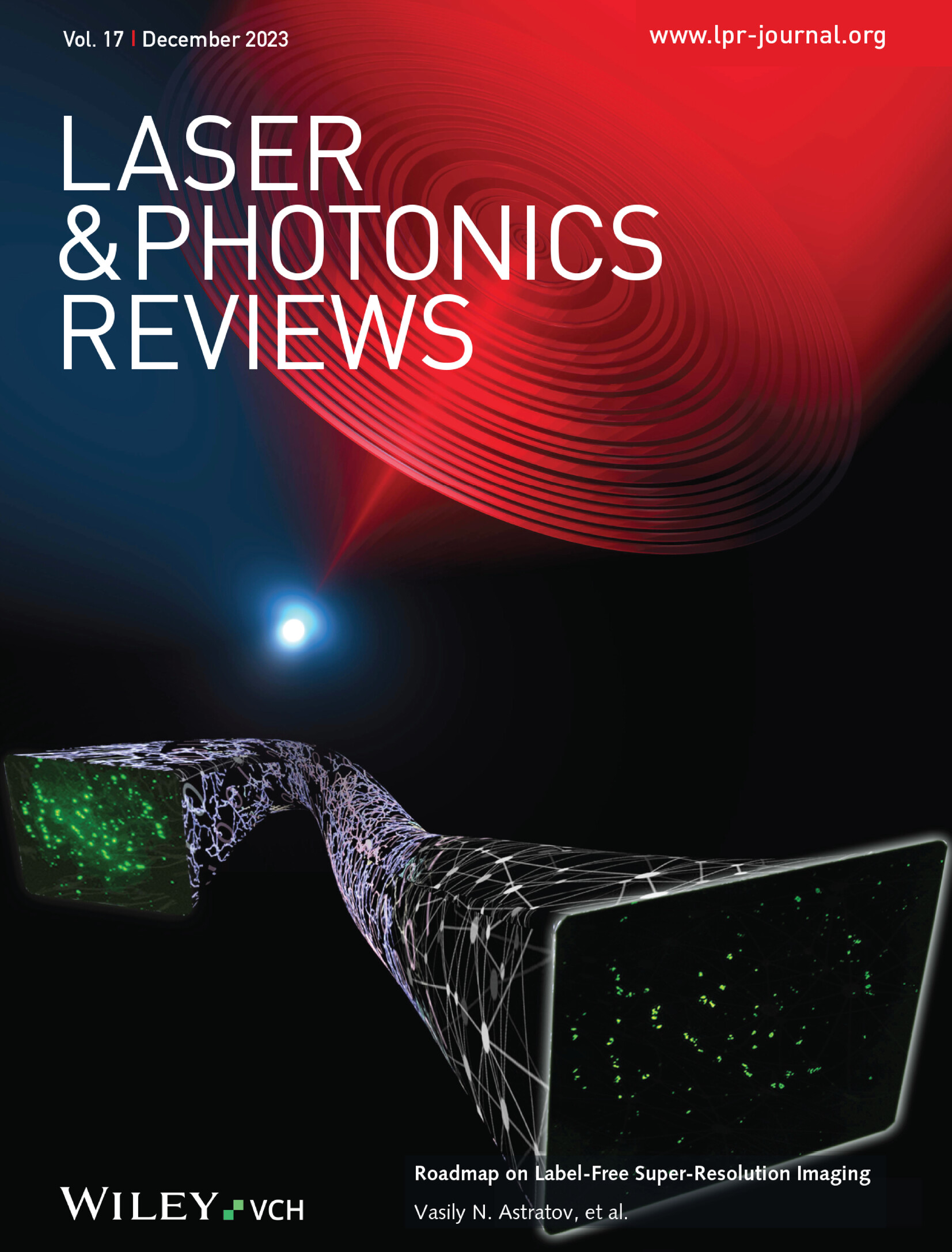Polarization‐Induced Buildup and Switching Mechanisms for Soliton Molecules Composed of Noise‐Like‐Pulse Transition States
IF 9.8
1区 物理与天体物理
Q1 OPTICS
引用次数: 0
Abstract
Buildup and switching mechanisms of solitons in complex nonlinear systems are fundamentally important dynamical regimes. Using a novel strongly nonlinear optical system, including saturable absorber metal‐organic framework (MOF)‐253@Au and a polarization controller (PC), the work reveals a new buildup scenario for “soliton molecules (SMs)”, which includes a long‐duration stage dominated by the emergence of transient noise‐like pulses (NLPs) modes to withstand strong disturbances arising from “turbulence” and extreme nonlinearity in the optical cavity. The switching between SMs and NLPs is controlled by the cavity polarization state. The switching involves the spectral collapse, following spectral oscillations with a variable period, and self‐organization of NLPs, following energy overshoot. This switching mechanism applies to various patterns with single, paired, and clustered pulses. In the multi‐pulses stage, XPM (cross‐phase‐modulation)‐induced interactions between solitons facilitate a specific mode of energy exchange between them, proportional to interaction duration, ensuring pulse stability during and after state transitions. Systematic simulations reveal the effects of the PC's rotation angle and intra‐cavity nonlinearity on the periodic phase transitions between the different soliton states and accurately reproduce the experimentally observed buildup and switching mechanisms. These findings can enhance the fundamental study and points to potential uses in designing information encoding systems.由类噪声脉冲转换态组成的孤子分子的偏振诱导堆积和转换机制
复杂非线性系统中孤子的建立和切换机制是非常重要的动力学机制。这项研究利用一种新型强非线性光学系统(包括可饱和吸收金属有机框架(MOF)-253@Au 和偏振控制器(PC)),揭示了 "孤子分子(SMs)"的一种新的建立方案,其中包括一个以瞬态噪声脉冲(NLPs)模式出现为主的长持续阶段,以抵御光腔中的 "湍流 "和极端非线性所产生的强烈干扰。SMs 和 NLPs 之间的切换由腔极化状态控制。切换过程包括在周期可变的光谱振荡之后的光谱坍缩,以及在能量过冲之后的 NLP 自组织。这种切换机制适用于单脉冲、成对脉冲和簇脉冲的各种模式。在多脉冲阶段,XPM(跨相位调制)诱导的孤子间相互作用促进了它们之间能量交换的特定模式(与相互作用持续时间成正比),确保了状态转换期间和之后的脉冲稳定性。系统模拟揭示了 PC 旋转角度和腔内非线性对不同孤子态之间周期性相变的影响,并准确再现了实验观察到的建立和切换机制。这些发现可以加强基础研究,并有望用于信息编码系统的设计。
本文章由计算机程序翻译,如有差异,请以英文原文为准。
求助全文
约1分钟内获得全文
求助全文
来源期刊
CiteScore
14.20
自引率
5.50%
发文量
314
审稿时长
2 months
期刊介绍:
Laser & Photonics Reviews is a reputable journal that publishes high-quality Reviews, original Research Articles, and Perspectives in the field of photonics and optics. It covers both theoretical and experimental aspects, including recent groundbreaking research, specific advancements, and innovative applications.
As evidence of its impact and recognition, Laser & Photonics Reviews boasts a remarkable 2022 Impact Factor of 11.0, according to the Journal Citation Reports from Clarivate Analytics (2023). Moreover, it holds impressive rankings in the InCites Journal Citation Reports: in 2021, it was ranked 6th out of 101 in the field of Optics, 15th out of 161 in Applied Physics, and 12th out of 69 in Condensed Matter Physics.
The journal uses the ISSN numbers 1863-8880 for print and 1863-8899 for online publications.

 求助内容:
求助内容: 应助结果提醒方式:
应助结果提醒方式:


